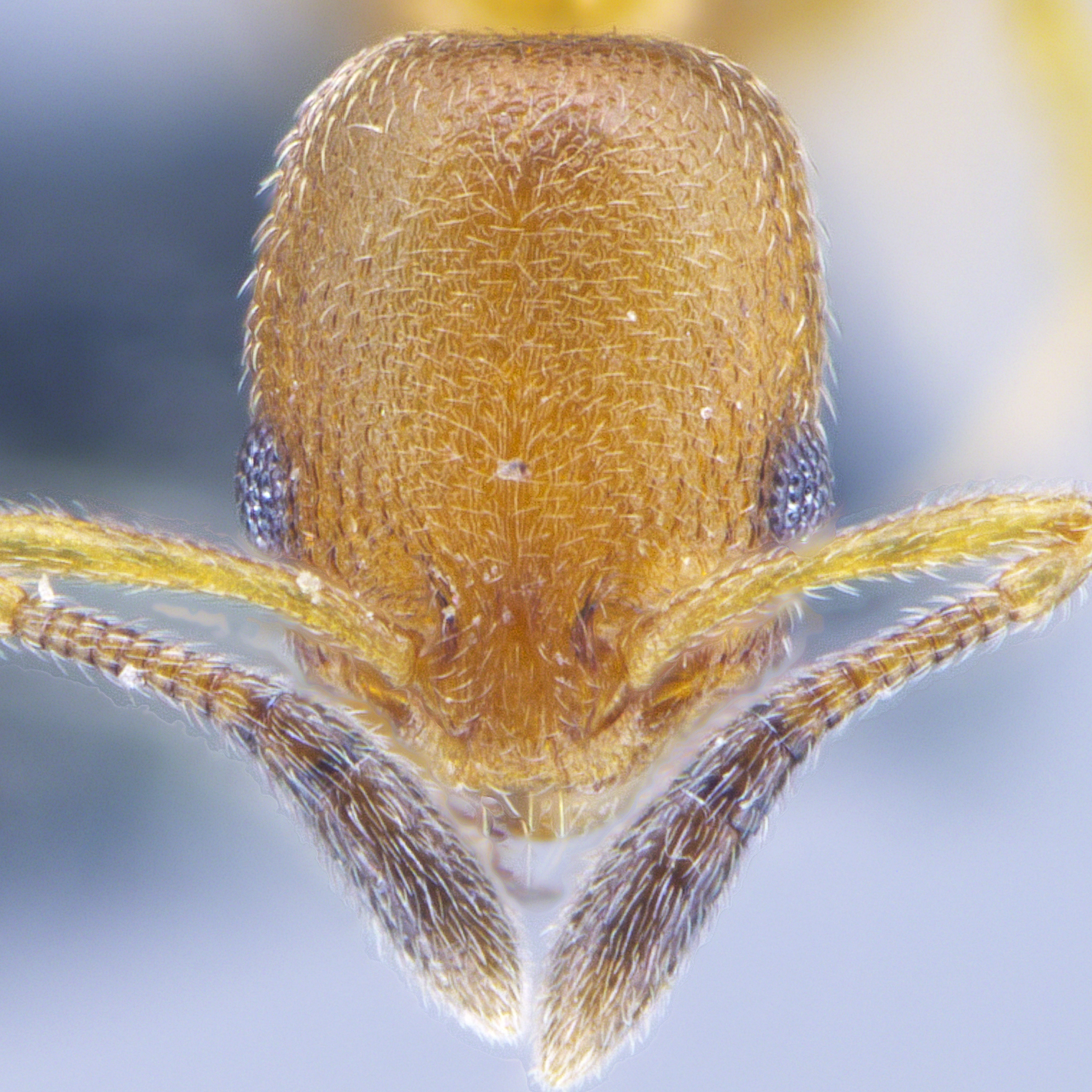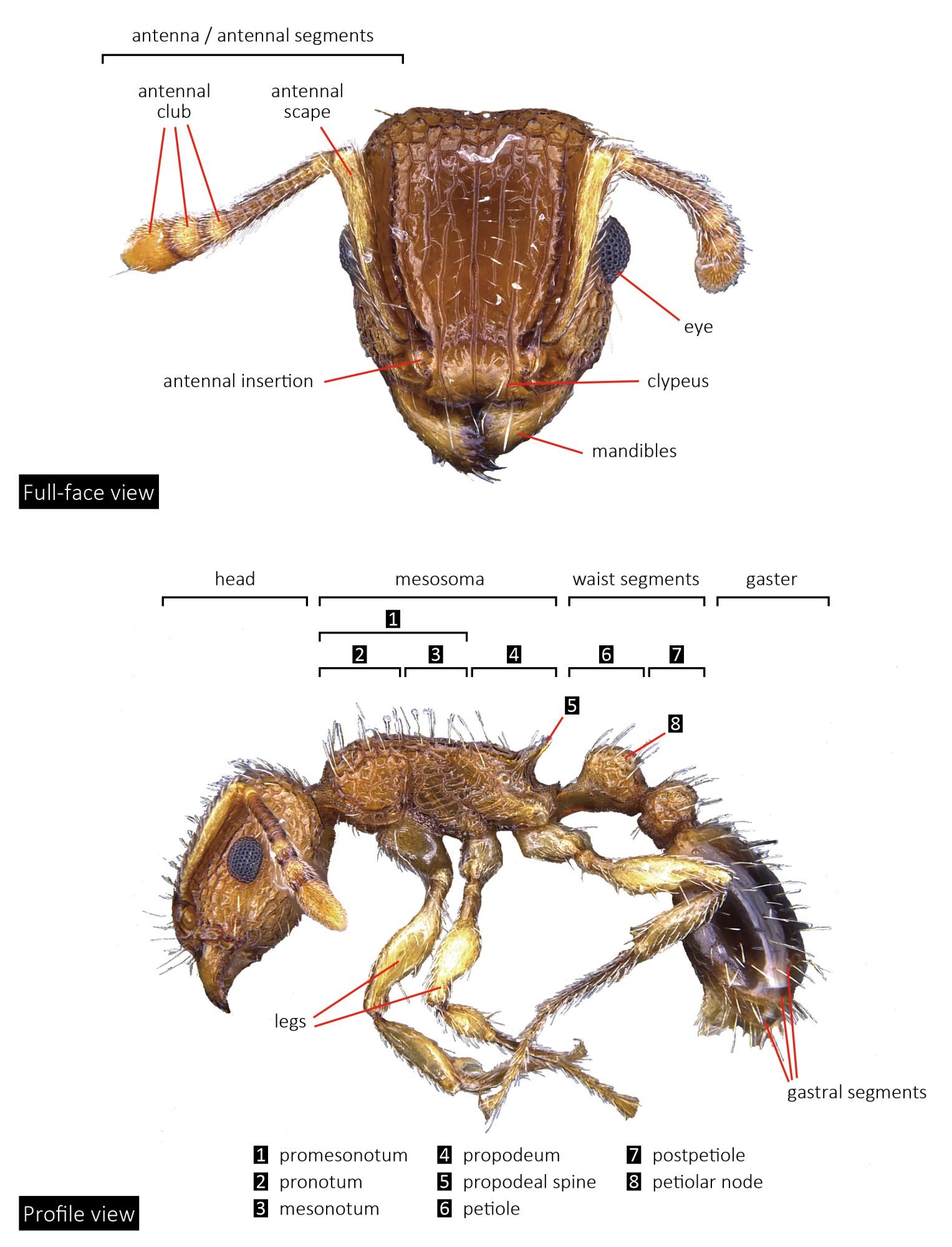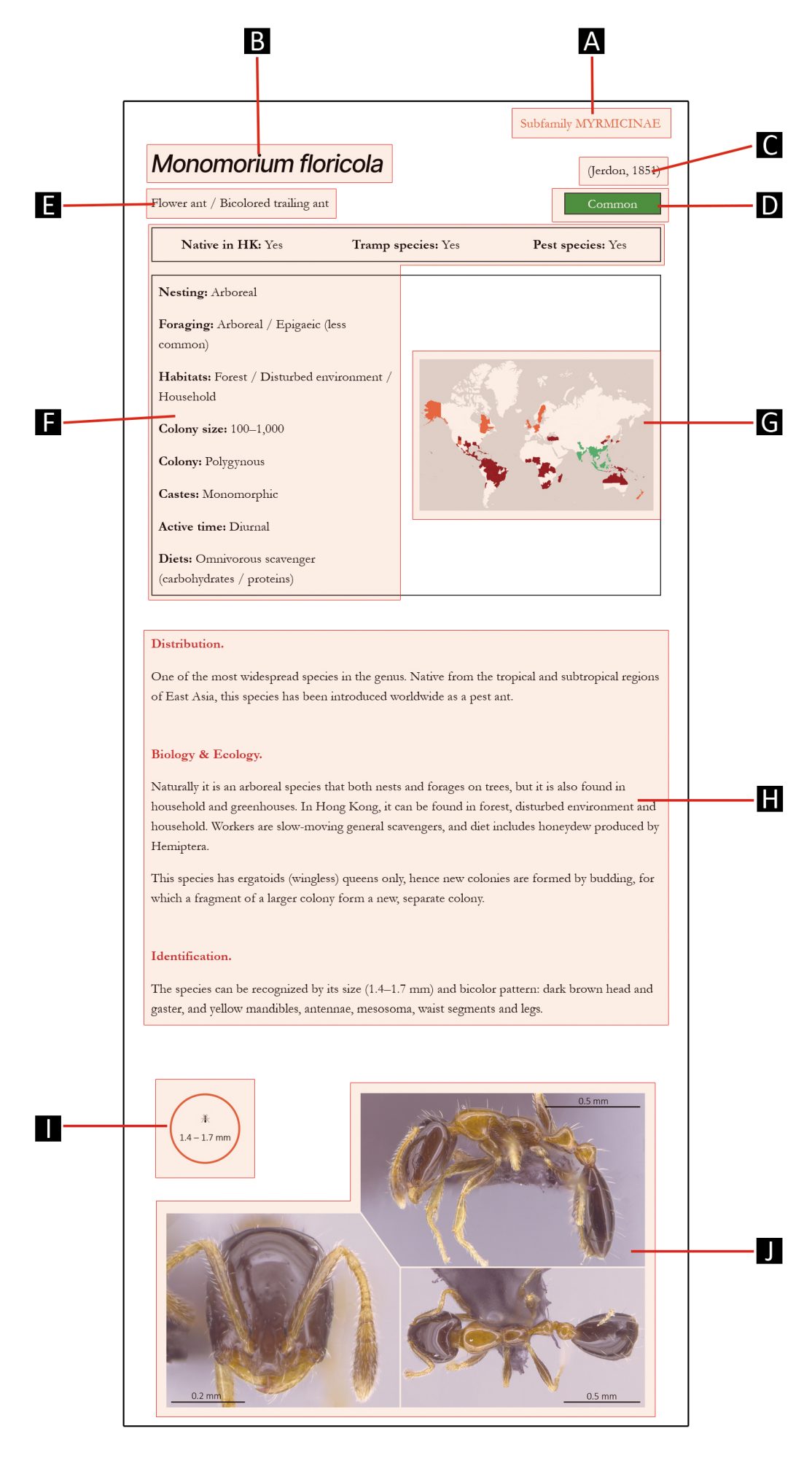
Subfamily MYRMICINAE
GENUS
Cardiocondyla
Emery, 1869
Distribution.
A moderate-sized ant genus with 72 species described. The genus has a widespread distribution in the Old World. A few species are known tramp species and have been introduced worldwide.
Biology & Ecology.
Cardiocondyla species are known to nest within the soil, under rocks, or, rarely, on lower vegetation. Nests are small, with several dozens to several hundreds of workers.
Cardiocondyla species are general scavengers. Workers’ foraging is mostly above the ground in open habitats, with many species showing high heat tolerance.
While male ants of most of the ant genera are short-lived and die soon after mating, this genus is known for having long-lived ergatoid (wingless) male in most species. They stay and mate in the same nest from which they were born, and would kill competitors and try to monopolize mating opportunities.
Identification.
Cardiocondyla species are very small to small in size (1–3 mm), with yellow, red or brown coloration. They can be recognized by their subrectangular head, 12-segmented antennae with 3-segmented club, by having two waist segments with the posterior one much broader than the anterior one, and without any standing hair on their bodies in profile view.

Species in this genus




